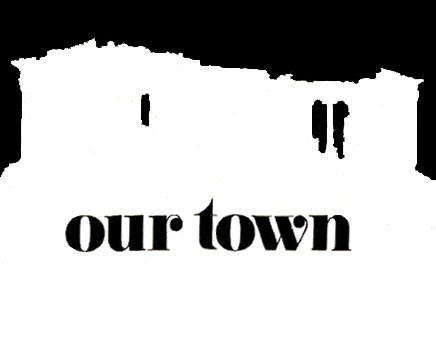
I think I shall never see a billboard lovely as a tree. Perhaps, unless the billboards fall, I’ll never see a tree at all.
It was that purveyor of saccharine verse Joyce Kilmer who thought he would never see a poem lovely as a tree. But Odgen Nash’s parody of it proves that Athens’ central optical experience today was well-known in America half a century ago.
The substitute growth of billboards in number and size in Athens in the last few years is truly astonishing. Back in the good old days the only things walls said was, eat Stella Makaronia and go home Yankees (Yiankides, sta spitia sas!). At least the products then were mostly local: Sans Rival ouzo, Fix blue label, Metaxas, and postermaster artist George Vakirdzis’ memorable Papastratos signs. Now Stella has been gobbled up by an Italian pasta monster and the Yanks have all gone home to work for Japanese auto manufacturers.
The billboards have stayed, however, and thrived, even if the four-color spectaculars of cars burning up and babies being born the size of small skyscapers advertise foreign manufactures. Now, advertising has moved off the hoardings onto public transport and turned buses into total commercial experiences, pushing products like soft drinks, junk food, underwear, sunshades and cigarettes, with the latter’s required health warnings presumably painted on the roofs so they cannot be read at street level and everyone can puff on in peace.
Big outdoor advertising is big busi-ness, and it’s all growing bigger. Twelve sheets of poster material to make up one irresistable image was thought big news awhile ago. Now 48 sheets (8m x 4m) is normal and often set up on three tiers. In this way a four-storey building can be completely concealed. Place a fourth on the roof and multiply it a few thousand times and that’s what the oldest cultural capital of Europe looks like. Try to beat that one, Antwerp!
Defenders of this metropolitan dis-play claim that grumpy people used to object to the forest of TV antennas as unaesthetic which billboards now conceal along with all those hideous concrete structures which make up the city. Critics, with irrefutable logic, counter that a second mistake does not correct the first one.
Behind it all is the 5.6 billion drachma revenue which comes out of this, over a billion of which is enjoyed by the municipality, from the rental of ground and wall space down to the small stuff pasted onto DEH columns, OTE boxes and garbage cans. This explains why trashbins on poles are set too high for throwing rubbish into but exactly on eye-level with pedestrians and bus passengers. Every Athenian oddity has its secret answer. The business in toto is estimated at 110 billion drachmas.
Oddly enough, this vast sum is the link-up between billboards and trees, the slit in the hoardings where the forest moves in, for it is the exact amount of money forthcoming from the EC for Athens great Archaeological Pank, the Ministry of Culture’s latest concoction to lure back the tourist.
Of course, tourists still stay to Athens: a missed plane connection, an emergency appendicitis on a nearby island, no money from home. There are many reasons to do so, but soon there will be a better one.
The rescue of the historical centre of the oldest capital in Europe is not only a Greek concern, says the Minis¬try, eyeing greedily that fat fakellaki known as Delors Package II. To make it all seem within grasp, there is a model of it now displayed in the Greek pavilion at the Antwerp Cultural Capital of Europe ’93 exhibition. With its cement blocks looking like sugar lumps, its public buildings spun out of green aspic and the whole thing sprinkled over with a salsa verde of trees, this sophisticated model makes Athens look, if not instantly edible, at least 100 percent biodegradable.
Now, wait a minute: Don’t think that Dora Bakoyianni’s Archaeological Park is going to be a forest requiring trail blazers, flares, compasses and lederhosen. Basically, it’s a half dozen or so park-sized areas of archaeological interest and connected by pedestrian walkways passing through some worthwhile and unknown parts of town.
The little that has been really accomplished to improve Athens’ quality of life makes what has been don e to Plaka and bits of other quarters doubly honorable in this bureaucratic wilderness where to get anything done takes a miracle.
What has been accomplished, though, is the transformation of the Athenian’s mindset towards the city where he abides. Twenty years ago a proposal to build a belt expressway around the foot of the Acropolis, destroying most of Plaka, was seriously considered. The present proposal includes well thought out pedestrian walks through Psirri, Metaxourgeion and Kolonos, underclass areas once dispised but now deemed desirable by people – and this is the true miracle -who are learning to love their city.
Truly, there is no reason to wait until 2003 to enjoy a walk through the historical heart of Athens. In fact, city planners have a way of formalizing things too much. Ramshackle, and messy, Athens’ small industrial areas are personalized still in a way that Greeks love, but which hard taskmasters like the Economist tell them they must give up if they are going to become proper little Europeans. And as they may become so, hurry along now and enjoy it before it’s all ruined and looks like Copenhagen. Rest assured: there is a firm law which states that outdoor advertising is banned from the historic parts of the city, making the billboards and the trees and the anti-quities all enjoyable – separately.








